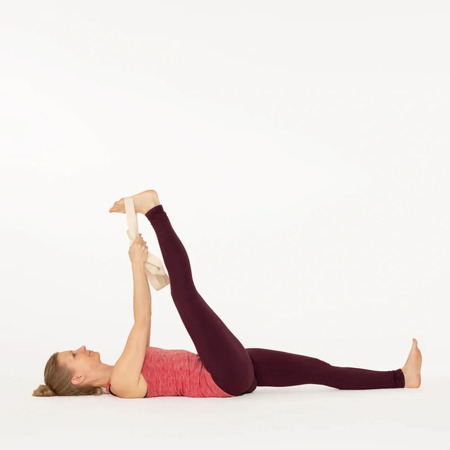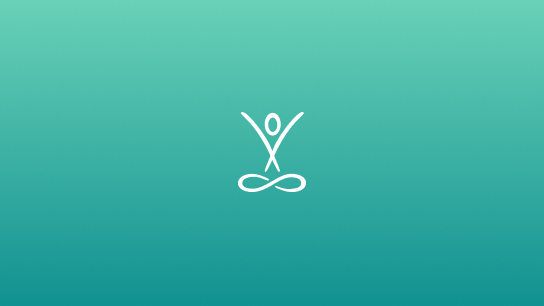
Reclined Big Toe Pose
Step by step
- Lie on your back, legs extended, feet flexed pressing out through the heels.
- On an exhalation draw the right knee into your chest, loop a strap around the arch of the right foot, or hook your first two fingers around your big toe.
- Extend the right leg up to the ceiling. Straighten your arms but keep both your shoulders on the mat.
- Keep your left leg engaged and press the top of your left thigh down with your hand. Extend through the right heel creating a comfortable stretch in your hamstrings.
- Stay for 5 breaths, then open your right leg out bringing it towards the floor on your right side. Keep the left hip grounded. Stay for 5 more breaths.
- Bring your leg back to centre and then lower it back to the mat. Repeat on the other side.
Beginners' tips
- You can keep your left leg bent, foot flat on the floor while extending the right leg with the help of a strap. Then when bringing the bent leg out to the side let the other leg fall out to the other side as well to balance the hips.
- Use a pillow under your head if it's more comfortable for you.
- When bringing the leg out to the side you can rest the thigh on a block or cushion to allow more release in the inner thigh.
Benefits
- Stretches the back of the legs (hamstrings and calves), the groin, inner thighs and lower spine.
- Strengthens the abdominals and adductors (inner thigh muscles) as you bring the leg back to centre.
Watch out for
- Use the strap as long as you need it to avoid over-stretching your hamstrings.
- Keep the muscles of both legs active, extending through the heels. However, avoid locking the knees. Think about engaging the thighs and lifting the knee caps as in Tadasana / Mountain Pose.
Variations
- While your extended leg is in the vertical position, draw it closer towards your face. As you exhale, engage your core muscles and lift the upper body bringing the chin towards the shin.
- Try crossing the extended leg across your body to feel a counter stretch in the outer hip area. Or take it further into an extended leg supine twist.
- Move dynamically between the first (leg vertical) and second (leg to the side) positions to build strength in the core and legs.
Article published: 05.08.2020|revised: 06.11.2020
Articles related to this topic
previous
next
Comments
There are no comments yet.

